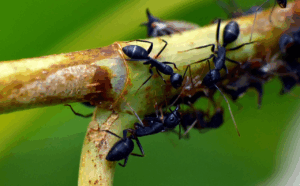From Tokyo to TikTok: Viral Japanese Eating Etiquette Guide Sparks Global Curiosity

A TikTok from City Lit, one of Europe’s leading adult education colleges, has taken the internet by storm – amassing over 1.4 million views with its insightful and informative guide to mastering Japanese eating etiquette.
Presented by Chikako Nakagawa, a renowned expert in Japanese culture, the viral video offers nine essential dos and don’ts – from how to properly hold your rice bowl to avoiding funeral-related faux pas – captivating over a million viewers and sparking international conversation.
This surge in interest is reflected in global Google searches, which show a dramatic spike in chopstick-related queries: “how to use chopsticks TikTok” has soared by 4,050%, while searches for “how to use chopsticks for ramen” are up 850%, “how to use chopsticks for beginners” has increased 250%, and “how to use chopsticks for kids” has risen 140%. These numbers highlight a growing worldwide curiosity about mastering chopstick skills and embracing Japanese dining etiquette.
This rising interest comes as Japan’s popularity as a travel destination continues to soar. In 2024, over 437,000 Brits visited Japan, drawn to iconic spots from Kyoto’s historic temples to Tokyo’s vibrant neon-lit streets. With British Airways doubling its daily flights to Tokyo, even more UK travellers are heading east – bringing with them a keen desire to learn and respect the cultural etiquette that comes with exploring Japan.
Whether you’re planning a trip or just enjoying sushi at home, Nakagawa’s viral etiquette tips reveal more than good manners – they reflect centuries-old Japanese customs.
Here’s a closer look at the nine tips that took TikTok by storm:
1. Lift your rice bowl
In Japan, it’s considered bad manners to leave your rice bowl on the table while eating. This practice, referred to as “dog eat” by Nakagawa, suggests a lack of respect for the meal. Instead, lift the bowl with one hand and bring it close to your mouth when eating.
2. Hold your soup bowl
Just like with rice, you should hold your soup bowl in your hand while eating. Drink the broth directly from the bowl, and use your chopsticks to eat the solid ingredients while holding the bowl – don’t leave the bowl resting on the table.
3. Use a chopstick rest
In Japan, resting your chopsticks across the top of your bowl or plate, like a bridge, is considered poor etiquette. While it might seem like a convenient way to avoid touching the table, this practice is frowned upon. Instead, always place your chopsticks on a designated chopstick rest when you’re not eating. When you’ve finished your meal, it’s acceptable to rest your chopsticks neatly across your bowl.
4. Don’t drag your dishes
It might be tempting, but never use your chopsticks to pull plates or bowls toward you. This is considered lazy and disrespectful. Always lift or reposition items with your hands instead.
5. Never pass food chopstick-to-chopstick
Passing food directly from one person’s chopsticks to another’s is a serious breach of etiquette in Japan, known as “hashi-watashi”. This taboo stems from a funeral ritual called kotsuage. After cremation, family members use large or metal chopsticks to pick bones from the ashes and transfer them to an urn. In some customs, the bones are passed from chopstick to chopstick, with two relatives holding the same bone at the same time.
This is the only situation in Japanese culture where two people use chopsticks to hold the same item together. Doing so at the dinner table strongly evokes this somber tradition and is considered highly disrespectful and inappropriate.
6. Don’t eat from shared plates
If you’re enjoying sashimi or another shared dish, always move food to your own plate first. Eating directly from communal plates is considered both unhygienic and disrespectful in formal settings.
7. Never stick chopsticks upright in rice
In Japan, “Tate-bashi” refers to the act of sticking chopsticks upright in a bowl of rice – a gesture deeply associated with funerals. At memorial services, a bowl of rice with vertical chopsticks is offered to the spirit of the deceased. Doing this at the dinner table is not only seen as disrespectful, but also as a symbol of death and bad luck.
8. Never lick the chopsticks
Just as licking a knife is seen as impolite in many European cultures, licking your chopsticks, known as “neburi-bashi” in Japan, is considered poor etiquette. It’s seen as unhygienic, childish, and inappropriate, especially in public or formal settings.
9. No double-dipping
When sharing dishes, only use the designated serving spoon to serve food onto your plate. Never eat with it, and don’t use your own chopsticks to dip into shared bowls – it’s one of the easiest ways to break etiquette (and spread germs).
“The video is more than a list of rules – it shows how everyday habits reflect deep cultural values,” says Gordon Chi, Director of Marketing at City Lit. “We want learning to be accessible to everyone, whether you’re travelling to Japan or simply curious about its culture. It’s not just about how to do something, but understanding why it matters.”
City Lit offers a wide range of Japanese language and culture courses, both online and in-person, designed to make learning accessible, engaging, and relevant. Whether you’re preparing for a trip to Japan or simply curious about its traditions, these courses invite learners to dive into everything from etiquette and conversation skills to calligraphy and culture.




